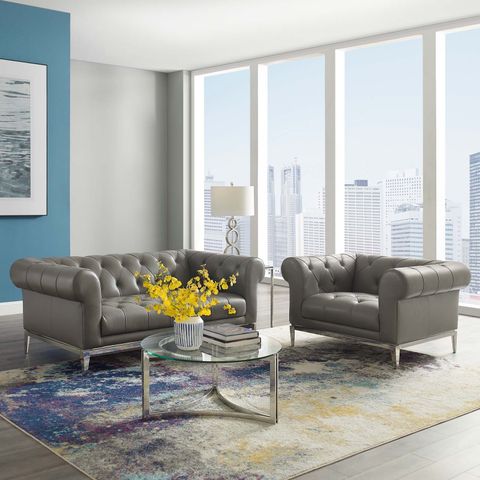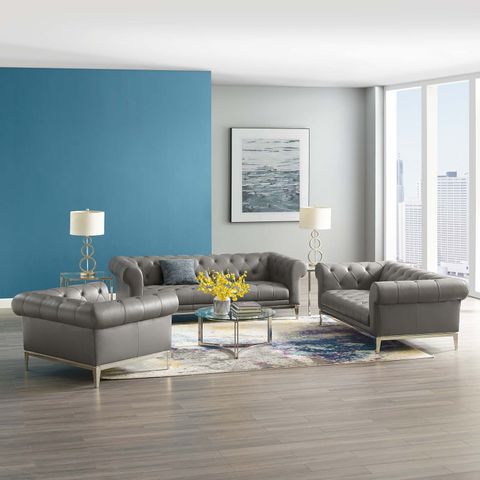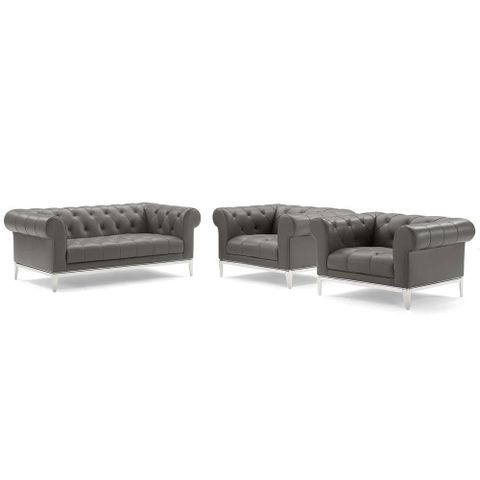Imagine sinking into a sofa that feels like a gentle embrace, or lying back on a chair that supports your body perfectly. These aren’t just luxuries – they’re necessities when it comes to creating a truly comfortable home environment. But how do you separate the good from the great when it comes to leather furniture? It’s not just about looking good – it’s about feeling good for years to come.
When you think about the most comfortable spots in your home, chances are they involve some form of leather furniture. Whether it’s a worn-in armchair that’s become your reading nook or a dining table that’s hosted countless family meals, leather has this remarkable ability to transform spaces into cozy sanctuaries. But choosing the right leather isn’t just about aesthetics. It’s about understanding materials, construction methods, and what makes certain pieces last while others fade quickly. This isn’t just about buying something pretty – it’s about investing in comfort that stands the test of time.
Understanding Different Types of Leather
Not all leather is created equal, and that’s something every serious buyer needs to grasp. There are several main categories that vary significantly in both appearance and performance. Full-grain leather represents the highest quality, maintaining the natural hide’s surface characteristics. It develops a beautiful patina over time, showing wear in a way that tells a story rather than hiding it. Top-grain leather has had its surface sanded down slightly, making it smoother but still durable. Corrected grain leather goes even further, with a synthetic surface applied to mask imperfections. This type often looks very uniform but lacks the character and longevity of natural options. Vegetable-tanned leather offers a different experience entirely, using natural tannins instead of chemicals, creating a stiffer feel that softens with age. The key insight here is that more natural processes often mean better long-term results, even if they cost a bit more upfront.
The Importance of Grain Quality
The grain pattern is one of the most telling signs of leather quality. Think of it like examining a fingerprint – each piece tells a unique story. High-quality leather shows consistent grain patterns with natural variations that add character rather than flaws. Look for pieces where the grain flows smoothly across the surface, indicating proper tanning and processing. Lower-quality options often display uniform patterns that seem too perfect, suggesting artificial treatments. When you run your hand along the surface, quality leather should feel substantial and responsive. The grain should have texture that varies naturally, not just a flat, painted look. Pay attention to how the leather responds to pressure – good leather will give slightly under weight but return to its shape without permanent indentations. Some manufacturers even offer leather with visible stitching patterns that show craftsmanship details.
Checking Construction and Hardware
Beyond the leather itself, the frame and hardware play crucial roles in determining how long a piece will last. Solid wood frames are generally superior to particle board or metal frames, though they may cost more initially. Look for solid hardwood construction that’s properly finished and sealed. The joints should be tight and well-finished, with no loose or wobbly areas. Hardware matters more than you might expect – high-quality hinges, screws, and fasteners make all the difference in durability. Check that metal components are rust-resistant and properly coated. Cushioning systems also vary dramatically, with some using low-density foam that compresses quickly while others employ memory foam or high-density polyurethane that maintains its shape. A well-constructed piece will have multiple layers of support that work together to distribute weight evenly. Sometimes the best indicator is simply asking about the manufacturer’s warranty terms.
Color and Finish Considerations
Colors and finishes can make or break a leather piece’s longevity. Darker colors tend to hide dirt and wear better than lighter shades, but they can also make a room feel heavier. Lighter colors provide a fresh, airy feeling but require more careful maintenance. Natural tones like browns and tans often age beautifully, developing rich hues over time. Synthetic dyes may look vibrant initially but can fade unevenly or crack with age. Vegetable-tanned leathers often have a more natural color palette that complements traditional settings well. The finish affects how the leather ages – some are designed to be wiped clean easily, while others develop a more natural sheen over time. Consider how much maintenance you’re willing to invest in keeping things looking new. Some finishes require regular conditioning, while others are virtually maintenance-free.
Comfort and Ergonomics
Comfort isn’t just about sitting on something soft – it’s about how well the piece supports your body naturally. Good ergonomics consider how people actually sit and move in furniture. A chair should support your lower back without forcing your spine into unnatural positions. The seat depth should accommodate your leg length comfortably, allowing your feet to rest flat on the floor. Back support should curve appropriately to follow the natural shape of your spine. Test pieces thoroughly before purchasing – sit in them for at least ten minutes and try different positions. Pay attention to how the leather conforms to your body shape over time. Some people prefer the firmness of a well-structured piece, while others enjoy the cushioning of softer materials. The right balance depends on personal preferences and how you plan to use the furniture.
Making Smart Purchasing Decisions
Quality leather furniture is an investment, so approaching purchases thoughtfully makes sense. Start by identifying your specific needs and usage patterns – do you need something for daily family use or occasional entertaining? Consider the lifestyle factors that affect furniture longevity. If you have children or pets, look for more durable options that can handle everyday wear. Research brands with good reputations for construction quality and customer service. Many quality pieces come with detailed care instructions that can extend their life significantly. Visit stores in person when possible, as the tactile experience of leather is hard to replicate online. Don’t be afraid to ask about warranties, return policies, and maintenance requirements. Remember that the most expensive option isn’t always the best choice – sometimes mid-range pieces offer the best combination of quality and price for your specific situation.
Choosing quality leather for home comfort involves more than just picking something that looks appealing. It requires understanding materials, construction techniques, and how different pieces will perform in your specific environment. The investment you make today in thoughtful selection will pay dividends in comfort and longevity for years to come. Whether you’re furnishing a cozy reading corner or creating a welcoming dining area, the right leather pieces can transform your space into a sanctuary of comfort. Take time to evaluate each element carefully – from the grain quality to the construction details. Remember that the most important factor isn’t just how something looks initially, but how it ages and continues to serve you over time. With the right approach, you’ll find leather furniture that not only meets your immediate needs but also becomes a treasured part of your home’s character.














